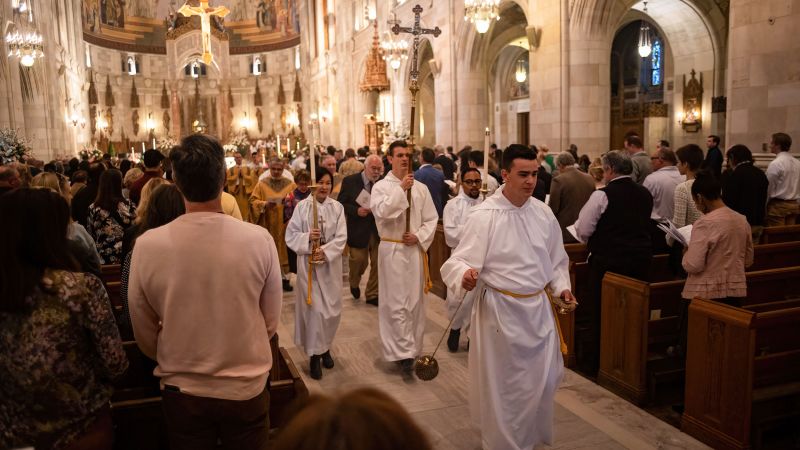Pre-Christian Easter: Origins of Rebellion
Easter, a holiday celebrated by billions worldwide, holds a rich and complex history far predating the Christian era. While today associated with the resurrection of Jesus Christ, its roots lie in ancient pagan spring festivals, brimming with symbolism of rebirth, renewal, and, crucially, rebellion against the forces of winter and darkness. Understanding these pre-Christian origins reveals a fascinating narrative of societal shifts, agricultural cycles, and the enduring human need to celebrate the triumph of life over death.
A Tapestry of Ancient Traditions
Long before Christianity, numerous cultures across the globe celebrated the arrival of spring with festivals often characterized by boisterous revelry and symbolic acts of defiance. These weren't merely celebrations of warmer weather; they represented a potent assertion of hope and renewal in the face of hardship. The Germanic peoples, for instance, celebrated Ostara, a goddess associated with spring and dawn, whose name bears a striking resemblance to the modern "Easter." These celebrations involved bonfires, egg-decorating – symbols of fertility and new life – and often, elements of social upheaval, hinting at a deeper narrative of rebellion.
The Power of the Egg: A Symbol of Renewal and Resistance
The egg, a ubiquitous symbol of Easter, holds powerful meaning in many pre-Christian traditions. Its hard shell, protecting the nascent life within, represents the potential for rebirth and renewal after a long, harsh winter. However, the act of decorating and exchanging eggs also signified a playful rebellion against the established order. The vibrant colors and intricate designs challenged the monotony of the winter months, a visual declaration of spring's arrival and the triumph of life.
Bonfires and the Banishment of Winter: A Ritual of Defiance
The ubiquitous Easter bonfire, present in countless pre-Christian spring festivals, wasn’t simply a cheerful gathering. It symbolized a powerful act of rebellion against the forces of winter and darkness. The flames, reaching towards the heavens, represented a purging of the old, a burning away of the negative aspects of the previous season, making way for the fresh energy of spring. This symbolic cleansing, often accompanied by boisterous rituals and celebrations, served as a powerful communal act of defiance against the limitations imposed by the colder months.
The Eostre Connection: Goddess of Spring and Renewal
The connection between the Anglo-Saxon goddess Eostre and the modern Easter is a compelling one, though debated among scholars. While the details surrounding her worship remain fragmented, her association with spring, dawn, and fertility strongly suggests a powerful deity who embodied the energy of renewal. The celebrations dedicated to Eostre likely involved elements of rebellion, celebrating the victory of life over the constraints of winter in a manner similar to other pre-Christian spring festivals across Europe.
Beyond Eostre: Global Parallels of Springtime Rebellion
It’s crucial to recognize that the pre-Christian origins of Easter aren't limited to one specific culture or deity. From the ancient Roman festival of Hilaria, celebrating the rebirth of nature, to various Celtic and Slavic spring festivals, similar themes of renewal and symbolic rebellion appear. These festivities, often involving boisterous processions, ritualistic cleansing, and the celebration of fertility, underline a universal human need to celebrate the triumph of life over adversity.
The Christianization of Easter: A Gradual Transformation
The transition of these ancient spring festivals into the Christian celebration of Easter was a gradual process, spanning centuries. The Church strategically adapted existing traditions, imbuing them with Christian meaning. The symbolic egg, the bonfire, and the joyful celebrations were assimilated, their pagan significance subtly redefined to reflect the resurrection of Christ. However, the underlying spirit of rebellion, the assertion of life’s triumph over death, remains a powerful resonance within the holiday's celebratory essence.
Conclusion: Easter's Enduring Legacy
Pre-Christian Easter, far from being a simple precursor to the modern holiday, reveals a fascinating tapestry of ancient beliefs and practices. These festivals represented a potent act of rebellion, a vibrant assertion of hope and renewal in the face of hardship. While the Christianization of Easter reshaped its symbolism, the deep-seated human need to celebrate the triumph of life over death, reflected in the joyous celebrations and symbolic acts of defiance, continues to resonate strongly within the holiday’s enduring legacy. By understanding its pre-Christian origins, we gain a richer appreciation for the multifaceted history and the powerful symbolism embedded within this globally celebrated holiday.
